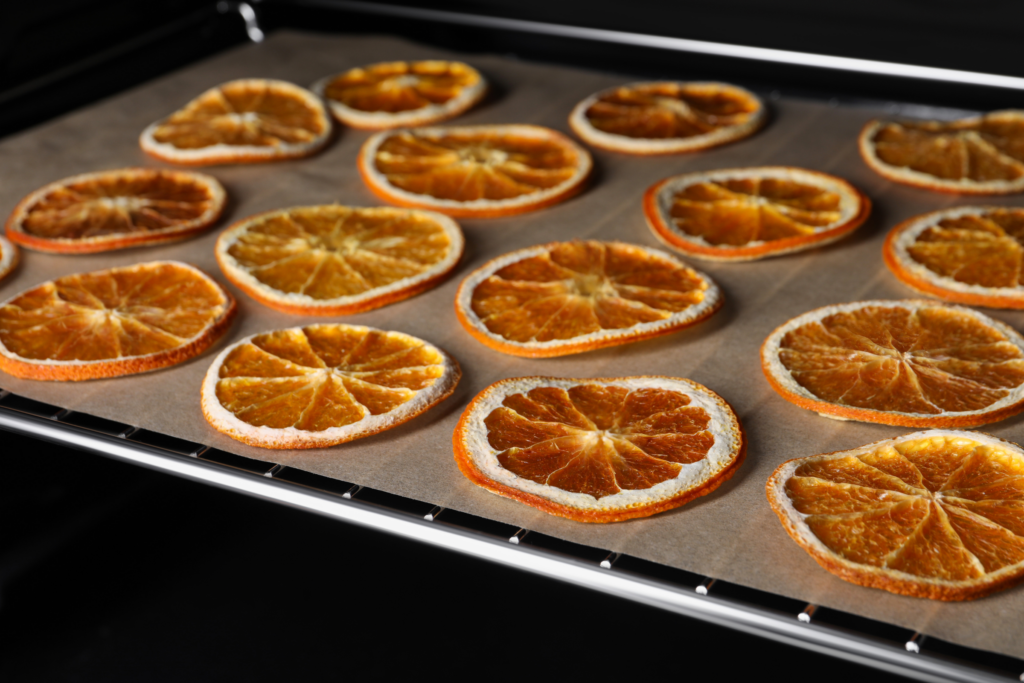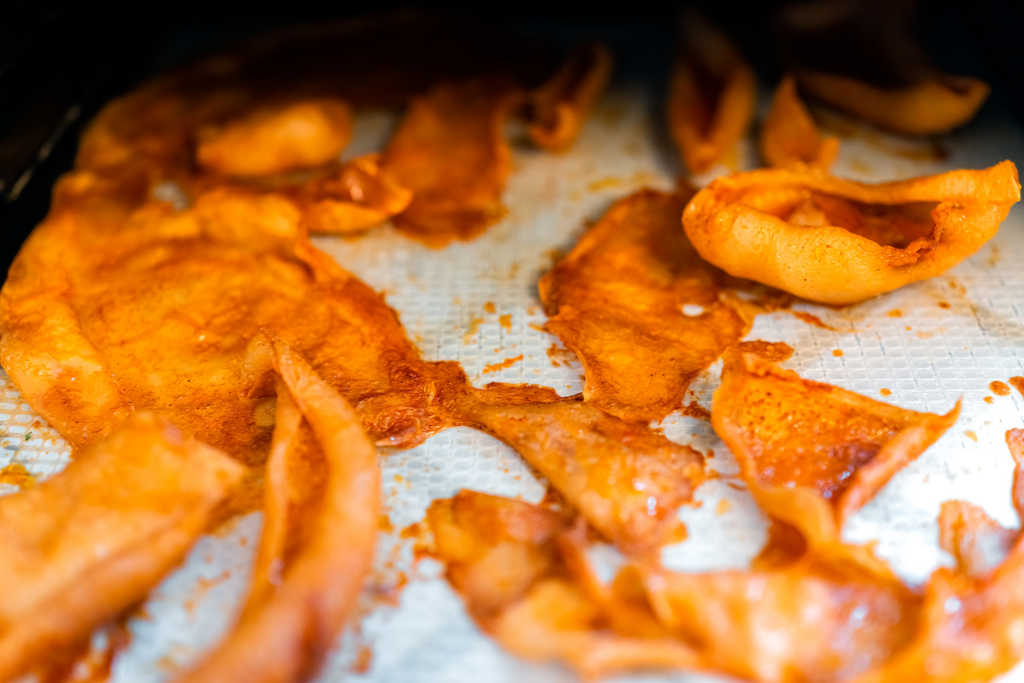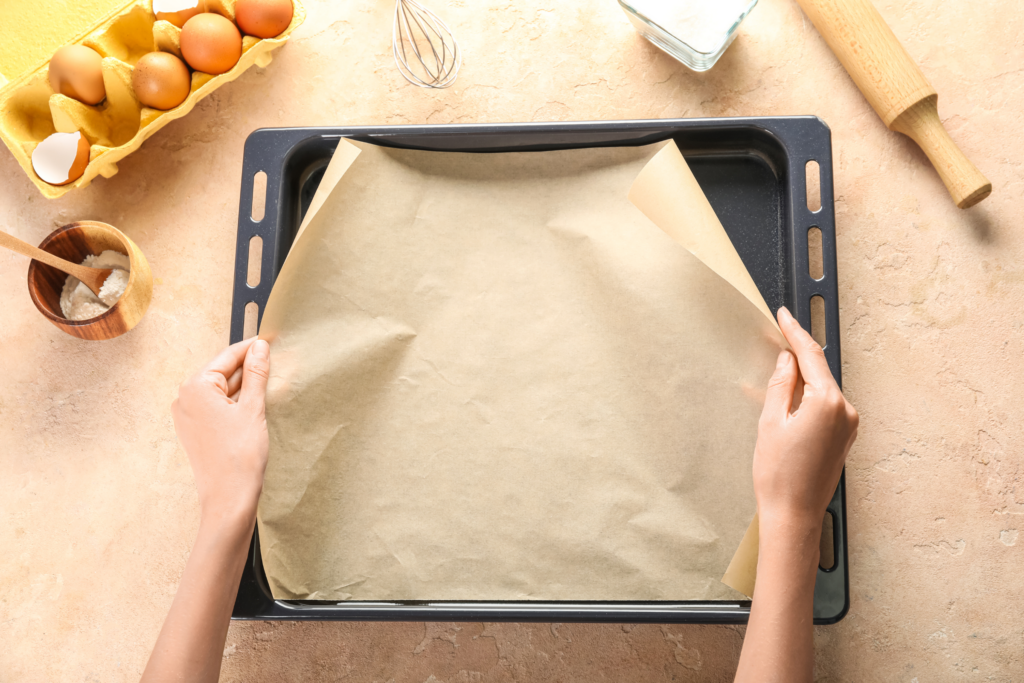Can You Use Parchment Paper in a Dehydrator? (5 Practical Perks With Alternatives)
Dehydrators always come in handy. They’re a reliable solution to food storage problems, and they consume less energy too. If you’re wary about placing your food in a dehydrator without lining the tray first, then you’re likely wondering if parchment paper is the solution.
You can use parchment paper in dehydrators without any worries about it melting or ruining your food. Parchment paper is a great way to line your dehydrator tray as it provides several benefits.
Now that you know the answer to the very common question of: can you put parchment paper in dehydrators, let’s explore the specifics. We’ll tell you how safe it is and discuss other options you can use as substitutes. Let’s get started!
Is it Safe to Put Parchment Paper in a Dehydrator?
Parchment paper has a non-stick feature that comes from the silicone coating though it is not 100% non-stick. It’s also pretty resistant to heat. Parchment paper can withstand a temperature as high as 450° F.
What makes parchment paper so great is its affordability and versatility. Aside from using it to package food, you can use it as a base for cutting food, kneading dough, and baking cookies, as a few examples.
Considering its versatility, you may also wonder if it’s a suitable option for placing down before any food you intend to dehydrate. Well, we’ll get right into that.
You see, a dehydrator uses heat to extract the moisture in fruits and foods, thereby extending its shelf life. In fact, after dehydrating food, you don’t need other preservation methods to prevent it from spoiling. That’s how efficient it is.
If you dehydrate your food correctly, it can last as long as five years with typical storage options like plastic containers. On the other hand, if you vacuum-seal the dehydrated food, it can last as long as thirty years.
If you’re wary of putting food directly on the dehydrator tray, then parchment paper is one of the best options. A dehydrator typically never exceeds a temperature of 150° F. As we mentioned earlier, parchment paper can withstand heat that’s three times higher.
If you cover the tray with parchment paper and place it in a dehydrator, you don’t have to worry about it melting on your food or catching on fire.

Benefits of Using Parchment Paper in a Dehydrator
Parchment paper’s versatility means that you can find it easily available for a wide range of uses. There’s not much you can’t use it for, and that includes putting it in a dehydrator.
Let’s explore several benefits of putting parchment paper in a dehydrator.
1. Prolongs the Lifespan of Your dehydrator Tray
After using your dehydrator without parchment paper, you have to clean the tray. The more often you use it, the more you have to take it out to clean it, and the more it wears down.
However, if there’s protective padding between the tray and your food, all you have to do is take out the food and the parchment paper.
Aside from frequent washing, oil and dried sugar can ruin your tray over time. Some foods can also change the tray’s color. Using parchment paper helps you maintain and keep it in good condition for a very long time.
This way, you can clean the tray less frequently. You’ll be extending its lifespan by adopting this method.
2. It’s Easier to Clean
Sometimes, when you dehydrate food, it can get sticky and attach itself to your tray, and you’ll have to scrape off the goo from the tray when cleaning it.
However, you can save time and energy by placing parchment paper between your food and the tray. The parchment paper won’t stick to the tray or the food–allowing quick and easy removal.
Just as you use parchment paper to prevent dough from sticking to your baking pan, you can also apply that strategy to dehydrating food.
3. It covers tray mesh
If your dehydrator tray has mesh grating that allows air to circulate, parchment paper may be super helpful. Typically, the mesh is fine enough that you won’t have to worry about food falling through.
However, some fruits like grapes or strawberries, or other foods can get small when they’re fully dried and can fall through these holes. This wastes some food and makes an extra mess.
Not to mention the juices from your food can seep through the mesh. For example, if you’re dehydrating extra juicy foods like meat or fruits, their moisture can seep through.
To save time and energy, prevent this by using parchment paper on the tray. Place parchment paper between your food and the tray before you start dehydrating it, and when it comes out, nothing will have fallen through.
4. It Gives Your Food Breathing Space
Compared to other food packaging materials, such as wax paper or aluminum foil, parchment paper promotes decent air circulation.
It’s easier for air to penetrate parchment paper than those other options, and you don’t want anything to prevent it from reaching your food adequately.
5. It is reusable
If you’re worried about additional waste by using parchment paper, you can reuse the tray lining. Since using parchment paper in a dehydrator doesn’t ruin it, you can use the lining over and over.
Dehydrator sheets vs parchment paper
When you read these benefits of parchment paper in dehydrators, you may be thinking that sounds just like a dehydrator sheet. What’s the difference between sheets specially designed for dehydrators and simple parchment paper?
It turns out not much. Both are typically made with a silicone coating and have similar properties.
The difference is that dehydrator sheets are designed with the dehydrator in mind. This allows for a better fit. Additionally, dehydrator sheets are a little more durable than parchment paper.

Can You Use Parchment Paper in the Freezer?
It’s common knowledge that a freezer uses different gases to maintain its extremely low temperature and preserve food. It’s best to avoid letting these chemicals touch your food.
There are several ways to cover your food before putting it in the freezer. Tupperware is one of the most common options. Then, we have parchment paper.
Parchment paper is so versatile; it can withstand extreme temperatures. Just as it can go in an oven, you can also put it in a freezer.
You can use it for packaging virtually any food too. However, it has a downside. Parchment paper has a non-stick feature that’s both an advantage and a disadvantage.
When you wrap it around food, for instance, meat, it won’t stick to itself. This means it can unwrap or open suddenly if it is not properly secured. Of course, that defeats the entire purpose of using a wrap in the first place.
Well, there’s a quick fix for that. You can use seal tape to hold the parchment paper in place after wrapping it around your food. Of course, you’ll have to use a large amount as it can get weakened in the freezer or if it gets exposed to water.
Use several layers of seal tape to hold the paper in place. Alternatively, you can place the food wrapped in parchment paper in a Ziplock bag or plastic wrap. That way, your food is doubly protected.
How to use parchment paper in a dehydrator
Using parchment paper in your dehydrator is just as simple as normal. There are only a few extra steps, but they will save you a lot of time cleaning up afterward!
- Unroll enough parchment paper to cover your dehydrator tray.
- Using scissors, cut the parchment paper so that it fits your tray.
- Lay the parchment paper on the tray.
- Place the food you’re dehydrating on the paper and dehydrate as normal!

Will any type of parchment paper work in a dehydrator?
Parchment paper comes in two main types made by a wide range of manufacturers. The question is whether any of these options will work.
The short answer is yes! Bleached or unbleached parchment paper will work just the same. The whitening process often uses chlorine to bleach the paper. This won’t add any chlorine to your foods, but those conscious of chemicals can choose to avoid it.
When it comes to parchment paper brands, there are several great brands. We recommend Reynolds Kitchens, If You Care, and Katbite Heavy Duty parchment paper. Each of these brands produces high-quality parchment paper that will meet your needs.
Other options for dehydrator sheets alternatives
Parchment paper is the ideal choice for a dehydrator. It’s non-stick and can withstand the heat of the dehydrator. But what if you run out and have to resort to other available options?
Below are some of the other safe options for lining your dehydrator.
Can You Use Aluminum Foil in a Dehydrator?
If your available option is aluminum foil, then go for it! You can put aluminum foil in the dehydrator without worrying about chemical or food poisoning. However, there’s a downside to this.
Aluminum foil isn’t non-stick, unlike parchment paper. As such, if you’re dehydrating sticky foods, then it’s best to refrain from using aluminum foil. However, if you don’t mind scraping the goo off the foil, then you can still go for it.
There’s another downside – aluminum foil is not as porous as parchment paper. This prevents the hot air the dehydrator releases from circulating efficiently–prolonging the dehydration period. As a result, your food may take double or even triple the time it should if you line the tray in aluminum foil.
Additionally, if the food you’re dehydrating has a high acidic content, then you shouldn’t bring it near aluminum foil. It can cause a chemical reaction with the foil, and you certainly don’t want to put the resulting food in your mouth.
That said, aluminum foil works as a suitable substitute for parchment paper.
Can you use plastic wrap in a dehydrator?
Another option is food-safe plastic wrap. This material is cheap, flexible, and non-stick. It works much the same as parchment paper with one big drawback.
Plastic wrap should only be used with foods at a very low temperature. It is nowhere near as temperature resistant as parchment paper. Use plastic wrap only in a pinch or with low-temperature dehydrator foods.
Can you use Nori sheets in a dehydrator?
If you happen to have Nori sheets on hand, they will also work in a dehydrator. These seaweed sheets provide a non-stick surface, just like parchment paper.
Keep in mind that this option will greatly affect the flavor of the food. Use Nori sheets only if the food would benefit from an added seaweed taste, as the sheets will transfer some flavor. Additionally, don’t use Nori sheets with extremely juicy foods.
Are Parchment Paper and Wax Paper the Same Thing?
It’s not uncommon to mix up parchment paper and wax paper. In fact, a large number of people cannot differentiate between the two.
Which is perfectly understandable, considering that they’re both similar in color and composition. However, there’s a massive difference between the two.
Parchment paper is lined with a thin layer of silicon, and that’s what gives it its non-stick feature. It’s also highly resistant to heat, which means you can use it in an oven, a microwave, or a dehydrator.
On the other hand, wax paper is lined with a thin layer of paraffin wax, which gives it its non-stick feature. However, it cannot withstand a high temperature. It’ll catch on fire, and shortly after, you’ll begin to smell smoke.
However, the wax paper has a redeeming feature; it’s water-resistant. As such, you can put it in a freezer. Wax paper is also suitable as a base for sticky substances like dough and batter.
Although parchment paper and wax paper are very similar in structure, you should never put the latter in a dehydrator. It’ll catch on fire almost instantly.
Summary of using parchment paper in a dehydrator
A dehydrator is an innovative method of preserving food for years. It’s also effortless to operate; you don’t need tech-savvy skills for it. Dehydrators ate relatively affordable too.
In this article, we’ve delved into the suitable materials we can put in a dehydrator. Adequate knowledge can prevent accidents, so we trust you’ve equipped yourself with enough information to make better choices.
Let Us Know How We’re Doing!
Did this expertly prepared resource answer your question?
Do you have another question about home maintenance, home improvement projects, home appliance repair, or something else?
Get more information, send in questions and keep the discussion going by contacting the I’ll Just Fix It Myself company customer service team at at 1-800-928-1490 or Email us at [email protected]
